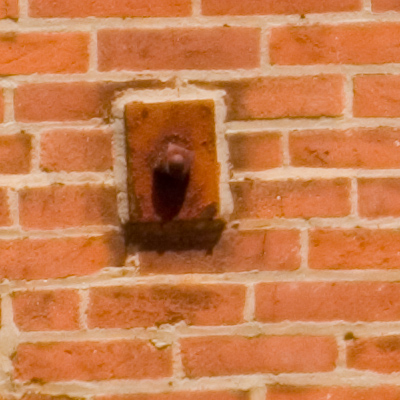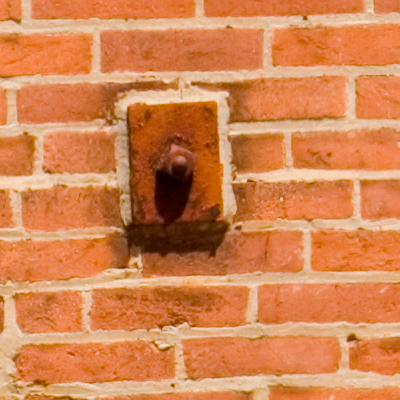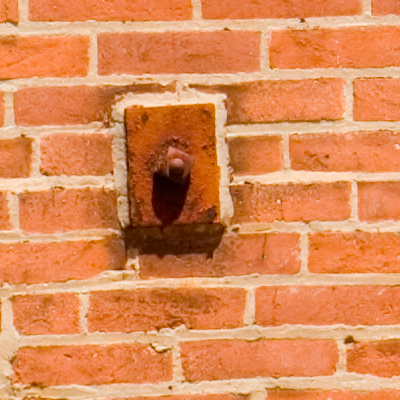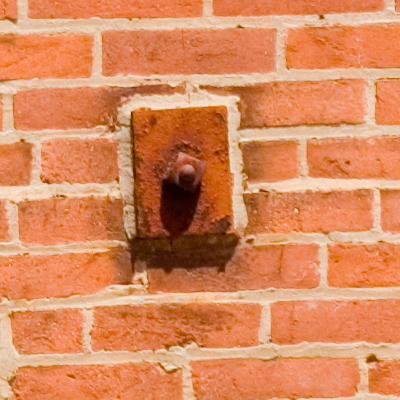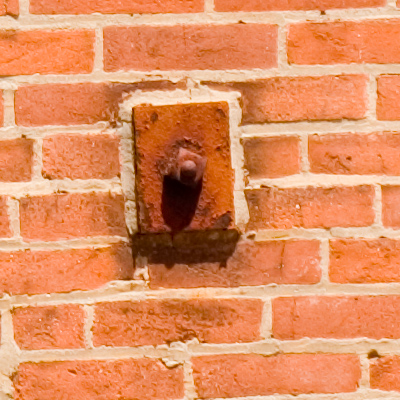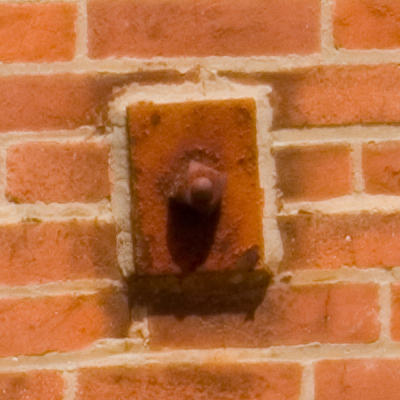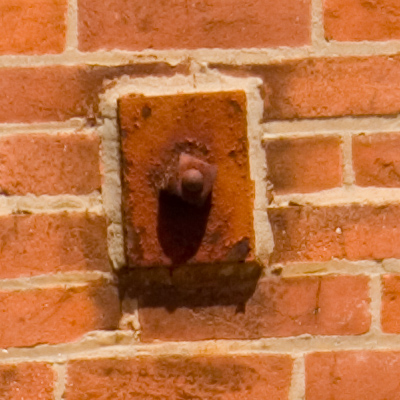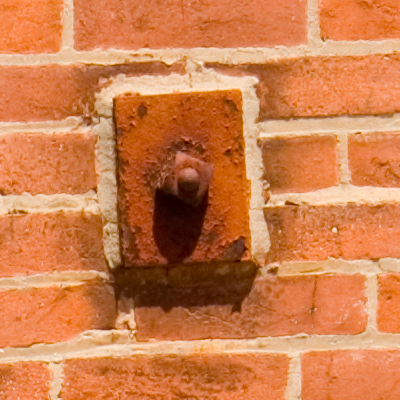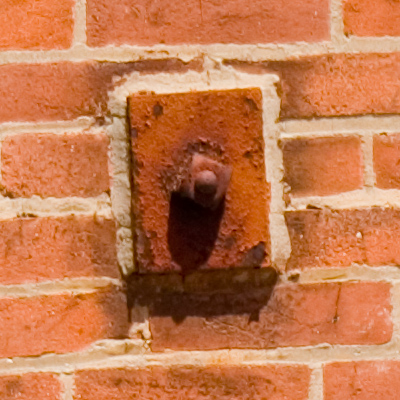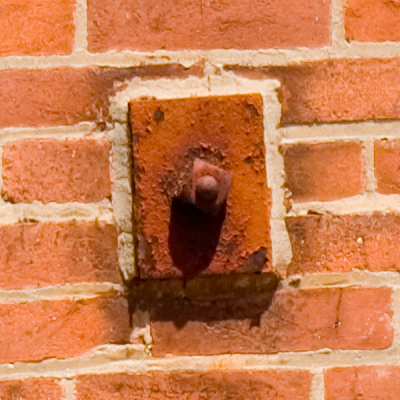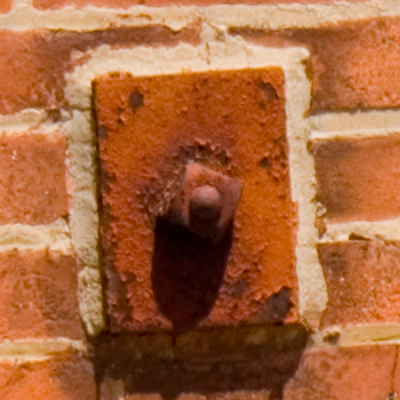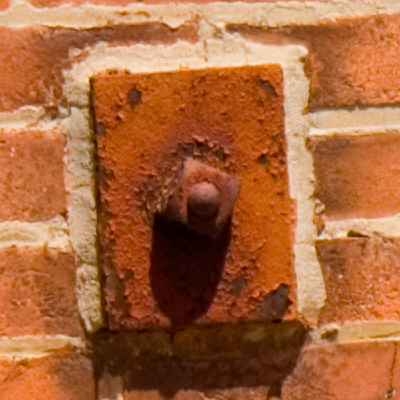Nikon D2x: Teleconverters and AF-S 80-200mm f/2.8 vs AF-S 300mm f/4Matt Blaze31 May 2005The Nikon D2x digital camera's sensor, at 4288x2848 pixels and covering an approximately 24x16mm frame, is sufficiently dense to be near the resolving capacity of typical lenses designed for 35mm cameras. That is, as often as not the limiting factor in the usable enlargement size of an image from this camera is not the sensor resolution, but rather the sharpness of the lens. This is said to be especially true for telephoto lenses. I own two medium-length Nikon telephoto lenses: The AF-S 300mm f/4D prime and the 80-200 AF-S f/2.8D zoom. (A 70-200mm "VR" version of the latter is now available, but I have the older, non-VR AF-S 80-200mm version; its optical performance is said to be similar). Combined with the TC14E (1.4x) and TC20E (2.0x) teleconverters, these lenses are quite versatile. However, observe that the long end of the 80-200mm f/2.8 with the 1.4 teleconverter is ostensibly a 280mm f/4 lens -- almost the same as the 300mm f/4. With the 2.0x teleconverter, the zoom can go to 400mm f/5.6, which is similarly close to the 420mm f/5.6 given by the 300mm f/4 lens with the 1.4x teleconverter. The natural question, then, is whether there is any reason to prefer the 300mm f/4 lens at all if the 80-200mm zoom can give similar performance with an appropriate teleconverter. Most published formal and informal tests conclude that the 300mm prime is indeed sharper, at least with film cameras. But it wasn't clear to me how much difference there is between these lenses as resolved on the D2x's sensor. So, I did a quick experiment to compare the relative center sharpness of various configurations of these lenses. The camera/lenses were mounted on a tripod and focused (through an open window) on a wall down the block (about 50m away, giving a focus setting just shy of infinity). I shot with the AF-S 80-200mm f/2.8D (at 200mm) and the AF-S 300mm f/4D lenses by themselves, with the TC14E and with the TC20E. Here's the full view with a 300mm lens:
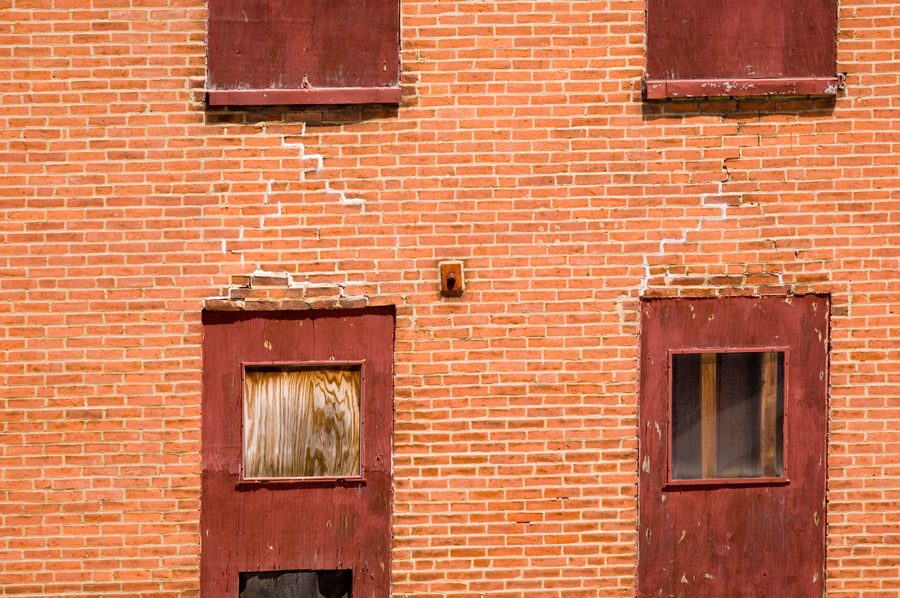 All shots were taken supported on a Gitzo 1348 tripod with a Really Right Stuff ball head. Both lenses were equipped with aftermarket Kirk collars (which are more stable than the stock Nikon collars). To further reduce vibration, both mirror lockup as well as shutter delay were used, and the camera was controlled via a wireless trigger (PocketWizard MultiMax). The exposures were f/2.8 at 1/2000, f/4 at 1/1000, f/5.6 at 1/500, f/8 at 1/250 and f/11 at 1/125, all under natural (partly cloudy) mid-day sunlight and within a few minutes of one another. Note that while I took some pains to reduce vibration and be consistent, these experiments were hardly performed under laboratory-grade conditions. In particular, I only tested one sample of each lens and teleconverter, and all had seen at least moderate use prior to testing. All images below are 100% (1:1 pixel) crops of a 400 pixel square in the (approximate) center of the frame, showing the rusty anchor bolt on which the lenses were focused. Exposures were taken with the 80-200mm zoom (zoomed to 200mm) with the lens set to f/2.8, f/4, and f/5.6 (at which point it appeared to have reached its maximum sharpness), and with the 300mm prime at f/4 and f/5.6 (at which point it appeared to have reached its maximum sharpness). The TC14E and TC20E teleconverters added one and two stops to the original lens apertures, respectively, of course. All images were captured with the D2x set at ISO100 and processed with identical settings with Adobe Camera Raw 3.1 (with sharpness=25). The crops and JPEG files were produced with Photoshop CS2, with JPEG quality at 11. No other post-processing was performed. The conclusion? You can judge for yourself from the images below, but to my eye, the 300mm prime was sharper at the center than the 80-200mm zoom plus teleconverter under all tested configurations. (This is perhaps an unsurprising, expected result). In particular, the zoom's performance wide open was very soft, perhaps unacceptably so for some applications, and did not become competitive with the 300mm prime until it was closed down two stops. (Remember that these tests show sharpness only at the center, not at the edges; that will have to wait for another day). Because the AF-S 80-200 f/2.8D plus the TC14E at 200mm gives an effective focal length of 280mm, it is compared with the 300mm prime with no teleconverter (and so note the slight difference in magnification of the subject). Similarly, the zoom at 200mm plus the TC20E gives an effective focal length of 400mm and is compared with the 300mm prime with the TC14E, which has an effective focal length of 420mm.
Experiment 1: AF-S 80-200 f/2.8D + TC14E (280mm effective) vs. AF-S 300 f/4
Experiment 2: AF-S 80-200 f/2.8D + TC20E (400mm effective) vs. AF-S 300 f/4 + TC14E (420mm effective)
Addendum: AF-S 300 f/4 + TC20E (600mm effective)The 300mm prime is a respectably sharp performer in the center even with the TC20E, all things considered:
Entire contents copyright © by Matt Blaze. All rights reserved. You may not copy, modify or use these images for any commercial or non-commercial purpose without permission. Main photo page here... Home page here... |
